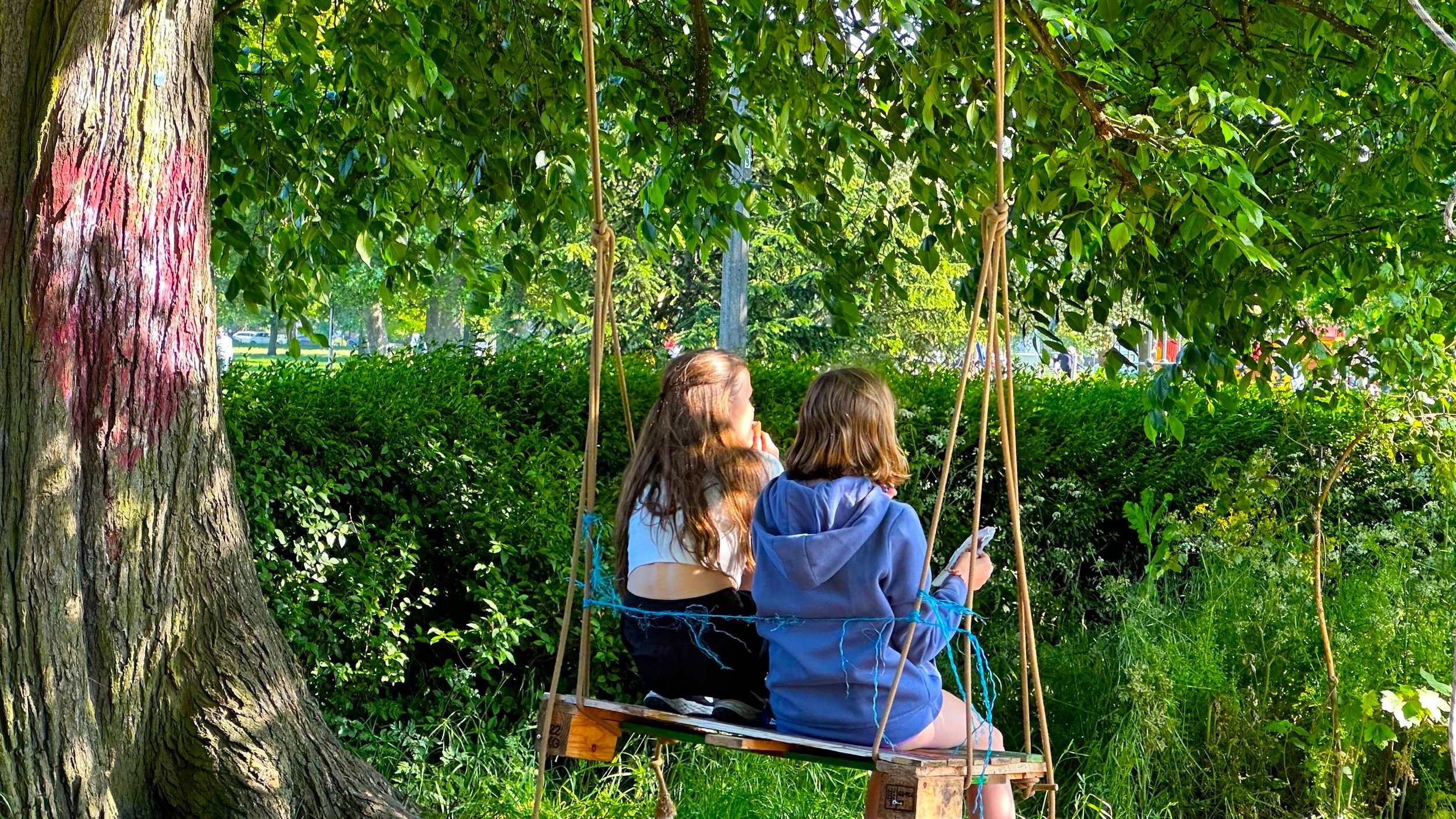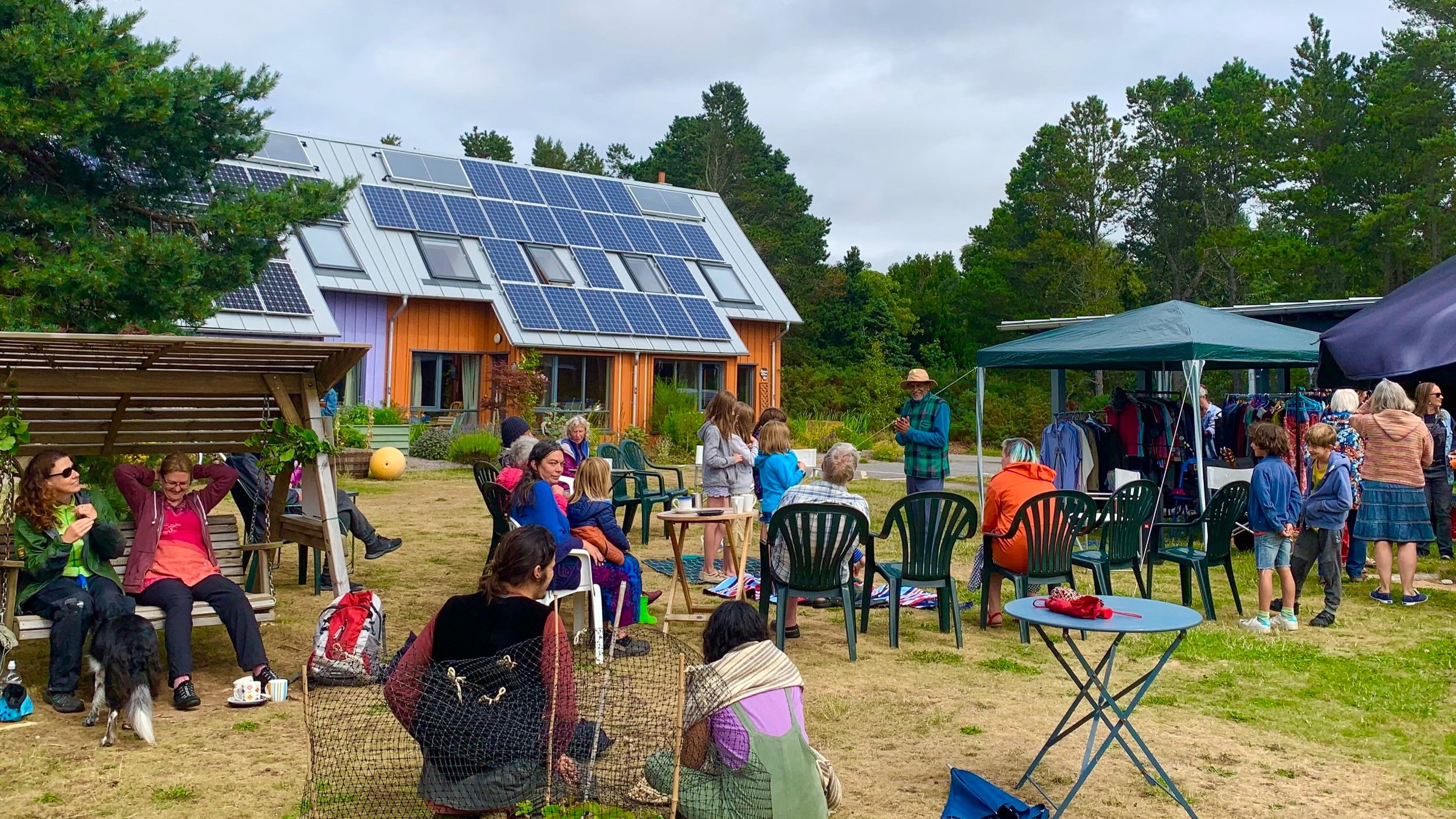Biophilic, Aesthetic, Place-Based and Intergenerational Education Informing Class Rooms for Life
Expanding the the thought horizons of education systems
We gather to expand the thought horizons of contemporary education systems… But before we do so, we need to prepare for the journey. We make one collective decision, reaffirm two awareness that I believe resonate with all those who keep a pulse on what is happening in the world, and then proceed to explore four horizons.
The decision is already embedded in the DNA of the programme ‘Classroom for Life’.
Rather than using an old map to reach a new territory, we must revisit education systems whose methodologies lie in their excessive emphasis on rational thinking. An education that teaches the head, and pays little attention to the body, heart and hands, and in fact only instructs half of the head.
Our brains have two hemispheres. The left is associated with logic and analytical thinking, and is considered the rational hemisphere. The right is the hemisphere of imagination, creativity, intuition, and holistic thinking.
Our education systems have spent billions solely educating the left half of our brains. In doing so, they emphasize the cognitive dimension and the acquisition of knowledge, through mental activities such as problem-solving, memory retention and information processing. Intrinsic to this educational paradigm is the use of a system of rewards, punishment and feedback, which undermines intrinsic motivation to learn.
Thus, we must promote an education that fosters ecological imagination, critical thinking, awareness of connections, interdependent thought, appreciation of art, benevolent eyes, and the treasures of the heart.
An education that focusses on lifelines not on deadlines.
The first awareness - multiple scenarios
Today we witness thousands of future scenarios about the future of humanity and the planet projected by think-thanks, economists, climate scientists, futurists, urbanists, and big data analysts, which we can synthesise into two scenarios:
Transition is inevitable:
Either we design for it,
Or we become victims of it.
Therefore, we reaffirm that our institutions in different ways are in the business of developing educational pathways dedicated to designing the transition. And we understand design as a collective process for envisioning, reflecting, conceiving, imaging, and realising how to re-design our human presence on the planet.
The second awareness - direction of travel
We are aware that being sustainable is not enough. Sustainability limits the destruction of the ecosystems that sustain life, but it doesn’t fix what’s broken. How can we sustainably bring back something that has been lost? Living systems have been too greatly impacted by our lifestyles and linear economies. We need to do more than simple be sustainable. We have to restore and rejuvenate the systems we have damaged.
As educators, we are compelled to awaken a regenerative mindset and mode of work in our students, so that they learn how to bring more life, vitality and viability – understood as vitality over time – to the systems they intend to work with in the future.
By adopting a regenerative mindset, we create the conditions for students to engage with the process of making the world more alive, vibrant, resilient and ensure our human systems can co-evolve and flourish with ecological systems over time.
With this decision and two awareness in mind, let us now explore 4 lines of work.
A sense of biophilia cultivated from childhood may help prevent disruptive behaviours during adolescence
The first line of work: biophilic education
The word biophilia originates from the Greek, ‘philia’ meaning 'love of' and bio signifying ‘life’. It refers to the inherent bonds humans can form with other species and living systems they rely on. Here I propose cultivating biophilia as a new pathway of education, where learner’s sense of identification with living systems is rooted in lived experience.
There is a degree of consensus among transformative educators like Rudolf Steiner, Roberto Assagioli, Maria Montessori, and Jean Piaget that children develop their values during their early years. For instance, in Montessori education, nature is integrated as an essential component, offering children numerous developmental opportunities that indoor settings cannot provide. Maria Montessori held the belief that every child possesses an inherent love for nature, a perspective supported by developmental psychologist Jean Piaget. Indeed, Piaget suggested that children have a natural predisposition to explore and form connections with the natural world when given appropriate opportunities and encouragement.
Here, educators are invited to grow sensitivities and competences to develop lesson plans where meaningful encounters can take place between children and other forms of life, providing a continuous and enriching experience for students of all ages to nurture love for living things. When this happens, the notion of living systems can be internalised not as an intellectual idea, but as a way of being nurtured from child to adulthoodThis line of work assumes that an awakened sense of biophilia cultivated from childhood may help prevent disruptive behaviours during adolescence, and the impetus to control and exploit nature in adulthood.
How can we infuse biophilic activities in national curriculums?
Aesthetic Education
One of the primary tasks of aesthetics education is to create conditions that develop student’s capacity to appreciate beauty in both art and nature, through sensory experiences.
The second line of work: aesthetic education
Since antiquity, the concept of aesthetic education has been a recurring theme in pedagogical theories discussing the influence of art and the beautiful in children’s development. One of the primary tasks of aesthetics education is to create conditions that develop student’s capacity to appreciate beauty in both art and nature, through sensory experiences.
This form of education seeks to expose children to various art forms, recognising that such exposure is crucial for art to become an integral part of an individual's cultural experience. The cultivation of an aesthetic culture is necessary to achieve a balance between rationality and creativity. This is not so much about training a child to be an artist but rather learning creativity, which paves the way for aesthetic values in everyday life, in the environment and in the future workplace.
What benefits does aesthetic education bring to children in an increasingly virtual world?
Place-based Learning
Our design challenge is to foster the notion of learning cities, towns and villages rooted in their uniqueness, while respecting the scale, imagination and experience of children
The third line of work: place-based learning
Despite the multiple converging crises facing our generation, we must let go of a problem-solving mindset and begin working with the notion of potential. While problem-solving looks backward, potential looks forward. There is always more potential that can be realised. Potential does not exist outside of a system, but is rather rooted in the uniqueness of each place – which is understood here as a unique, multi-layered network of living systems within a territory, emerging from the interactions of the ecological, socio- cultural, and the built environment systems. I call this interaction the bio-cultural-spatial uniqueness of place.
Our design challenge is to foster the notion of learning villages, towns and cities in their uniqueness, while respecting the imagination, the experience and the scale of children. By working with potential, education should focus the collective gaze of learners on what is strong not on what is wrong. And, thus, harnessing potential as a source of collective motivation to learn. Furthermore, we can awaken in young people what the ancient ones called the beneficial eye.
How can place-based educators create learning environments that enable students to identify and unleash the regenerative potential of place, while building an awareness of global citizenship?
Intergeneration exchange at the Findhorn Ecovillage
The fourth line of work: intergenerational learning
Intergenerational learning involves people of all ages learning together and from each other, typically occurring within families where knowledge is passed down through generations.
This line of work is about listening to and learning from older persons who hold tremendous knowledge of place. Many of them have cultural practices that have the power to restore, regenerate and repair our relationships with each other and the natural world.
This is one of the principles of Transition Towns, which encourages listening to the stories of the older people in our communities, finding out what life was like when they were young, before the advent of cheap oil, globalisation and long supply chains. Those born before the 1950s, often remember when life was less consumerist. How did people in the past feed, clothe, build their homes, and move around?
There is an increasing recognition by the international community and the UN system of First Peoples’ as guardians of memory of the creation of the world and teachers of climate resilience.
Thus, this line of work suggests education should adopt a dynamic and rhythmic relationship between cumulative tradition, storylines, rituals, theologies, and inner worlds, while bringing back our older and First’s people’s to the heart of our communities.
What influence do older people’s storylines have in the contemporary education systems?
Conclusion
1 decision, 2 awareness, 4 horizons: Biophilic, Aesthetic, Place-Based, Intergenerational.
This is an open invitation for each one of us to contribute to the collective endeavour of cultivating an education for life that enables young people to experiment, experience and express:
The notion of living systems not as intellectual concept but as a way of being;
Aesthetic values in everyday life;
A regenerative mindset that identifies potential in the uniqueness of each place;
Respect to those who hold the memory of the creation of the world.
Excepts of my talk at the International Conference on Ecosocial Education. For more information on the Class Rooms for Life programme check their site (in Slovenian).





